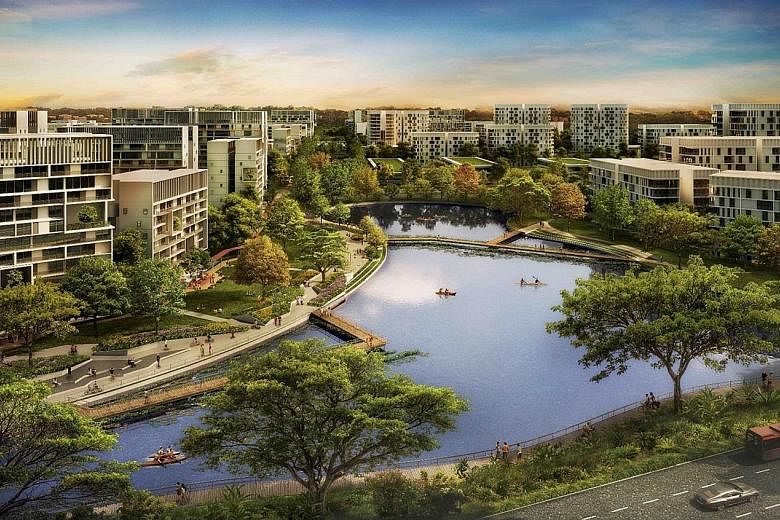The animals in Tengah, a secondary forest area in the west where Singapore's first "forest town" will be built, will have help in finding a new home.
To reduce the potential impact of works on the animals, they will be shepherded to adjacent vegetated areas unaffected by development in the short term, said Senior Minister of State for National Development Desmond Lee in Parliament yesterday.
The Housing Board will conduct an environmental baseline study to better understand the topography, hydrology, flora and existing wildlife in the area, he said.
The study should be completed by the first half of this year, and its key findings will be shared with the public in due course, he told Mr Louis Ng (Nee Soon GRC).
Mr Ng had asked about the Ministry of National Development's plans for wildlife in the area.
He also wanted to know if the ministry would publicise the results of environmental impact studies done in relation to the development of Tengah, where a new town the size of Bishan will be built.
The first public flats in Tengah - located between Jurong East to the south, Choa Chu Kang to the north and Bukit Batok to the east - will be launched in 2018.
The town will eventually contain 42,000 homes - 30,000 units of public housing and 12,000 of private housing.
Mr Ng told The Straits Times that he was heartened to see that a baseline study on wildlife would be done in Tengah, and that HDB would also be considering a wildlife shepherding programme.
"It is important to balance our need for developments with the need for conservation and wildlife protection," he said.
He added that the public should be given sufficient time to review the study's results, and provide their feedback to HDB.
"I look forward to our dialogues with HDB on this and working with them to incorporate public feedback before the plans are finalised," he said.
HDB's decision to conduct a wildlife shepherding plan in Tengah follows a similar move by the Urban Redevelopment Authority (URA) last year.
A 30ha plot in Lentor designated for private housing was gradually cleared so that the animals could be herded to nearby green areas, such as the Central Catchment Nature Reserve.
The URA's move had helped to save several animals, including the critically endangered Sunda pangolin and the flying lemur. These were relocated or shepherded to nearby green plots.
Meanwhile, nine species of birds threatened with extinction have been spotted in the secondary forests of Tengah, including the changeable hawk eagle and the red-wattled lapwing, according to the Nature Society (Singapore).
Tengah is the first new town to be developed since Punggol two decades ago, and is touted by the Government as a "green" town with a car-free centre and a 5km "forest corridor", which will serve as a wildlife connector between the Western Water Catchment and the Central Catchment Nature Reserve.


